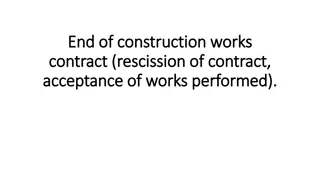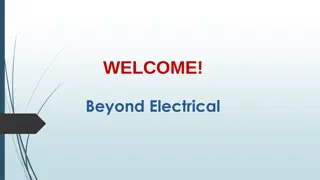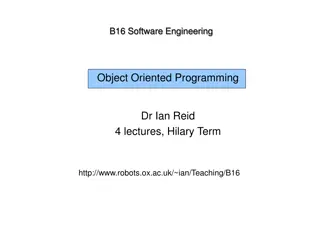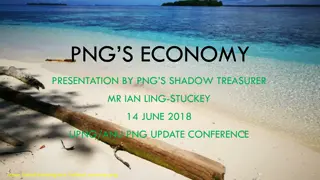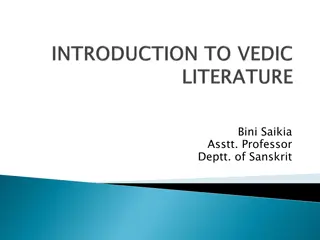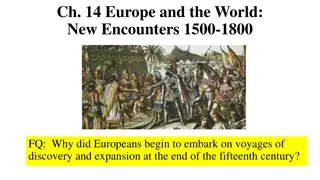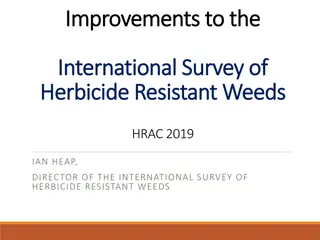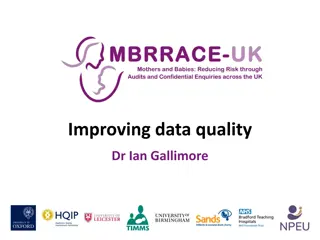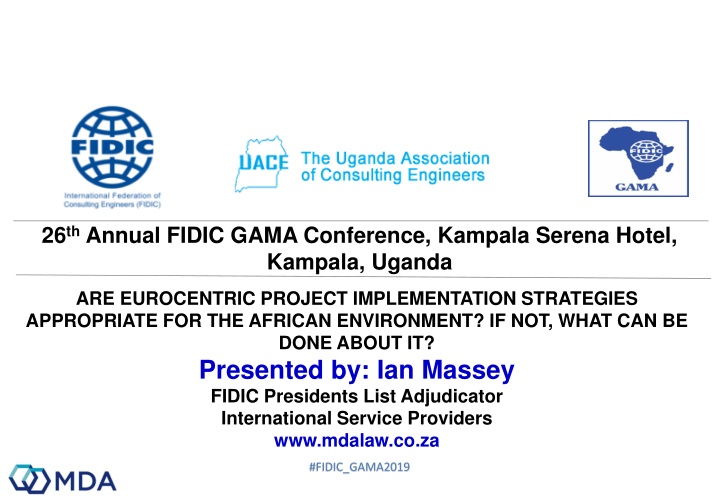
Implementing Project Strategies in Africa: Challenges and Solutions
Explore the challenges of implementing Eurocentric project strategies in the African environment and discover potential solutions to address issues like skills availability, infrastructure development, and risk management. Learn how collaborative approaches and realistic risk-sharing strategies can enhance project outcomes in Africa.
Download Presentation

Please find below an Image/Link to download the presentation.
The content on the website is provided AS IS for your information and personal use only. It may not be sold, licensed, or shared on other websites without obtaining consent from the author. If you encounter any issues during the download, it is possible that the publisher has removed the file from their server.
You are allowed to download the files provided on this website for personal or commercial use, subject to the condition that they are used lawfully. All files are the property of their respective owners.
The content on the website is provided AS IS for your information and personal use only. It may not be sold, licensed, or shared on other websites without obtaining consent from the author.
E N D
Presentation Transcript
26th Annual FIDIC GAMA Conference, Kampala Serena Hotel, Kampala, Uganda ARE EUROCENTRIC PROJECT IMPLEMENTATION STRATEGIES APPROPRIATE FOR THE AFRICAN ENVIRONMENT? IF NOT, WHAT CAN BE DONE ABOUT IT? Presented by: Ian Massey FIDIC Presidents List Adjudicator International Service Providers www.mdalaw.co.za #FIDIC_GAMA2019
Carrying out projects in Africa is demanding Skills availability Materials of an acceptable standard Logistics Infra Structure development: Short term job opportunities Enhance skills transfer Heightened expectations from local stake holders Funded by various agencies Designed and supervised by funding community Not necessarily attuned to multi-cultural challenges Can lead to frustrations and conflict #FIDIC_GAMA2019 This Photo by Unknown Author is licensed under CC BY-SA
Introduction It is vital that the implementation strategy adopted on a Project in Africa provides a platform where these risks and expectations are accommodated. The FIDIC suite: Designed for international contracts Assume competency is available Standard risk allocation fair and reasonable This Photo by Unknown Author is licensed under CC BY-SA-NC #FIDIC_GAMA2019
When unanticipated risks manifest themselves No mechanisms in place Adversarial contracts Unfavourable environment Underpricing Poor performance Escalation of claims and disputes One of the challenges facing the promoter and designer is to anticipate risks #FIDIC_GAMA2019 This Photo by Unknown Author is licensed under CC BY
Introduction Scarcity of work and an overtraded industry can lead to: Underpricing Poor performance Escalation of claims and disputes Resources diverted to resolve peripheral issues Unsatisfactory project outcome A collaborative implementation and more realistic risk sharing strategy needs to be adopted This Photo by Unknown Author is licensed under CC BY-SA-NC #FIDIC_GAMA2019
Introduction Collaborative Contract Forms Alliance Memorandum of understanding Objectively measured against a predetermined performance profile Standard Forms FAC-1 NEC4 Alliance Contract #FIDIC_GAMA2019 This Photo by Unknown Author is licensed under CC BY-NC-ND
Introduction Alliances are not a new concept: Exploitation of the North Sea Oil Fields Applying Alliancing savings in cost and time Assets exploited successfully Lessons learned such as increased maintenance and running costs Track forward 20 years: Refurbishment contracts Christchurch, New Zealand #FIDIC_GAMA2019 This Photo by Unknown Author is licensed under CC BY-SA
Integrate stake holders into the planning and management process. Community in Christchurch was used as the source of skilled resources Better communications with the community Brown Fields Projects Residents have to be decanted to allow refurbishment What is significant: #FIDIC_GAMA2019 This Photo by Unknown Author is licensed under CC BY-SA
Introduction The objective of this form is to drive down costs and make money In the African context there are other benefits: Greater community involvement Sustainable job creation Skills development Generally improved value #FIDIC_GAMA2019
Introduction The Process The Two Stage Open Book Early appointment of a full project team Commitment from Client Client invites team members Tier 1 Contractors and Consultant teams compete Bidders chosen based on: Capacity / Capability / Stability / Experience Strength of their supply chain / Profit/fees/overheads This Photo by Unknown Author is licensed under CC BY-SA #FIDIC_GAMA2019
Introduction The Process continued The Adjudication criteria: Technical Capacity and Competence Cultural fit Commercial Terms Price Successful Tier 1 team appointed Detailed proposals on cost #FIDIC_GAMA2019 This Photo by Unknown Author is licensed under CC BY-SA
Introduction Two-Stage Open Book model reduces industry bidding costs Faster mobilization Single Integrated team Tier 1/2 engagement Deadlines for design and risk contributions Agreed fixed price and risk profile before Construction Phase Client-led processes Committee made up of Alliance members This Photo by Unknown Author is licensed under CC BY-NC-ND #FIDIC_GAMA2019
Introduction Proactive risk management Clause 8.3 of the FIDIC Red Book 1999 enhanced Risks reallocated, where a Party to the Alliance is in a better position to manage Cultural fit needs to be assessed Alliance unfriendly behavior should not be tolerated Flexibility #FIDIC_GAMA2019
Introduction Proven benefits of Two Stage Open Book and Supply Chain Collaboration Cost Savings Cost Competition and Control Improved Design Risk Management Time Management Extended Warranties Sustainable Solutions Stakeholder Consultation Appointment of SMEs and Local/Regional Businesses Employment and Skills Commitments This Photo by Unknown Author is licensed under CC BY-NC-ND #FIDIC_GAMA2019
Thank you for attending. #FIDIC_GAMA2019

